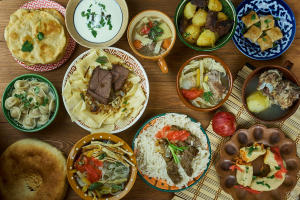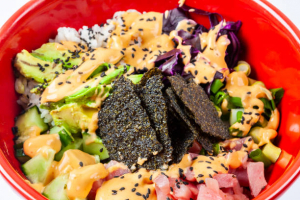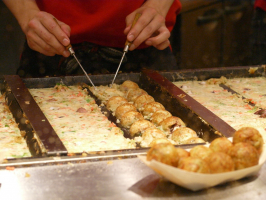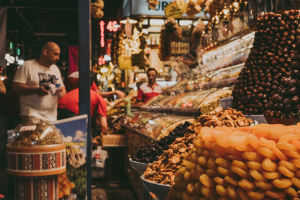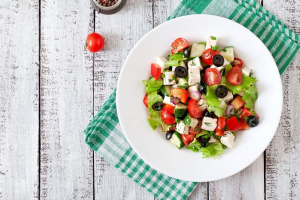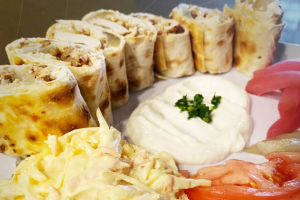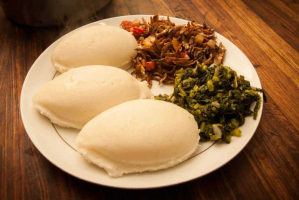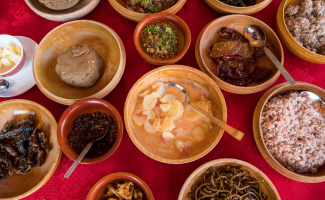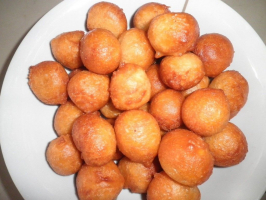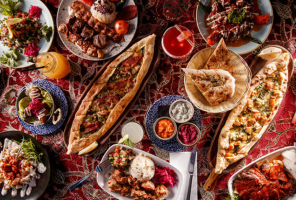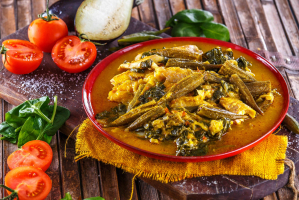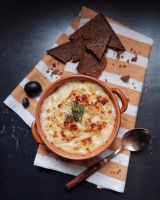Top 12 Best Bolivian Foods
Bolivian food has been shaped by the cuisines of many countries, most notably by Spanish cuisine after being a colony of Spain for nearly 300 years. If you're ... read more...planning a trip to Bolivia and want to get a taste of the local cuisine, Toplist hopes our list of the Top 12 greatest Bolivian cuisines will point you in the right direction.
-
Pique Macho is the most typical Bolivian dish (also called Pique a lo Macho). When I first arrived in Bolivia, I was told that it is the national dish of Bolivia, though Salteas is also considered to be the national dish.
Pique Macho is a colossal plate of beef, sausage, boiled eggs, french fries or potatoes, onions, and red and green peppers. The ingredients differ from one city to the next, as well as from one restaurant to the next, but one thing remains constant. After ordering this dish, you will not be hungry. The majority of the portions are large enough to feed at least two people.
There are two legends surrounding the creation of this dish. The first is related to the size of the serving. If you can finish one by yourself, you're a man. Don't even bother. Simply forward it to a friend.
According to the second legend, a group of hungry workers arrived late at night at a restaurant. The owner had already closed and informed them that she no longer had food. The workers, on the other hand, insisted on eating whatever she could make.
So the woman made a plate of "anything," added a lot of chillies to help with the workers' inebriation, and said, "piquen si son machos." That roughly translates to "eat if you're manly enough," and it became the name of the dish later on.
Chilies are mentioned in the second legend. They are an important component of pique a lo macho and can make the dish so spicy that I would be unable to eat it. When ordering, be sure to specify the level of spiciness you prefer. Picante means "hot" in Spanish, so if you want something mild, simply say "no picante" and they should understand.
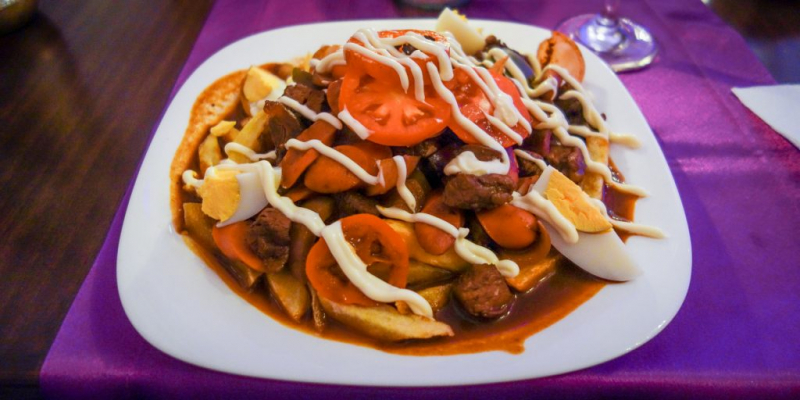
Photo: pinterest 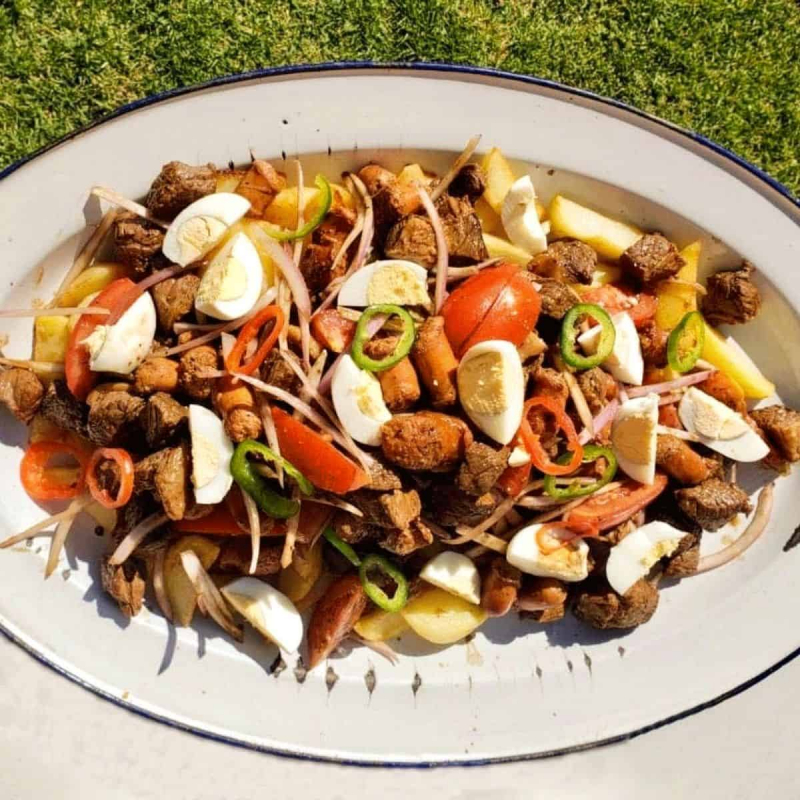
Photo: Chipa by the Dozen -
Fritanga de Cerdo was one of the dishes I tried during my La Paz foodie tour. It is typically served with corn and (dehydrated) potatoes and consists of well-cooked pork covered in a spicy red sauce with lots of garlic and onions.
According to our guide, the dish is frequently served for regional holidays in Potos and Sucre. If you're in Sucre, you might see it on the menu as "Fritanga chuquisaquea." This is because chuquisaquea refers to the Chuquisaca Department, which includes Sucre.
Take a stroll through a local market if you're curious about dehydrated potatoes. When it comes to traditional Bolivian cuisine, they are one of the most recognizable ingredients.
Dehydrated potatoes have the appearance of rocks, either white or dark purple, and can be stored for many years. They are cooked by soaking them in water overnight and then cooking them like regular potatoes. Examine the brown things that resemble mushrooms in the image above. These are the dried potatoes.
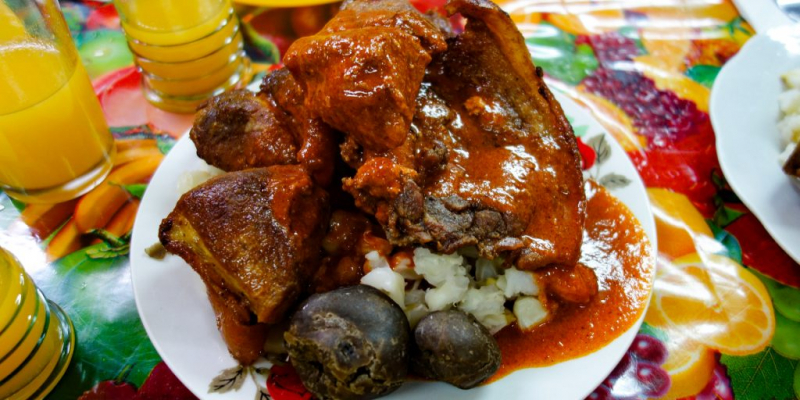
Photo: pinterest Video: Gusto y Sabor con Tatty -
This pork dish is similar to Fritanga de Cerdo. It originated in Cochabamba, where chefs prepare it in front of customers who eat it on weekends. The meat is cooked for an extended period of time in a mixture of its own fat and chicha (an alcoholic drink made of corn). It's also served with corn and potatoes, but unlike Fritanga, it doesn't have a spicy sauce.
Chicharrón de Cerdo may not appear to be the most appetizing dish on a menu with photographs, but it is definitely worth ordering for its deliciousness.
If you plan a trip to Bolivia in the future, try this dish at least once. Your trip will not be complete without trying this dish. Many visitors are surprised by its unique taste and say that they had a good experience with it.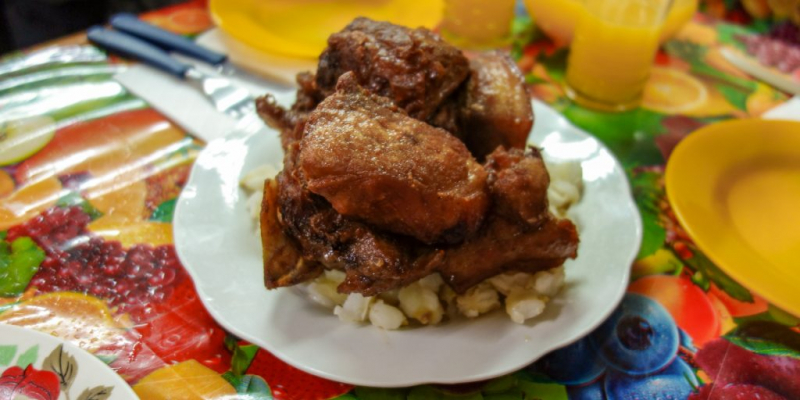
Photo: pinterest 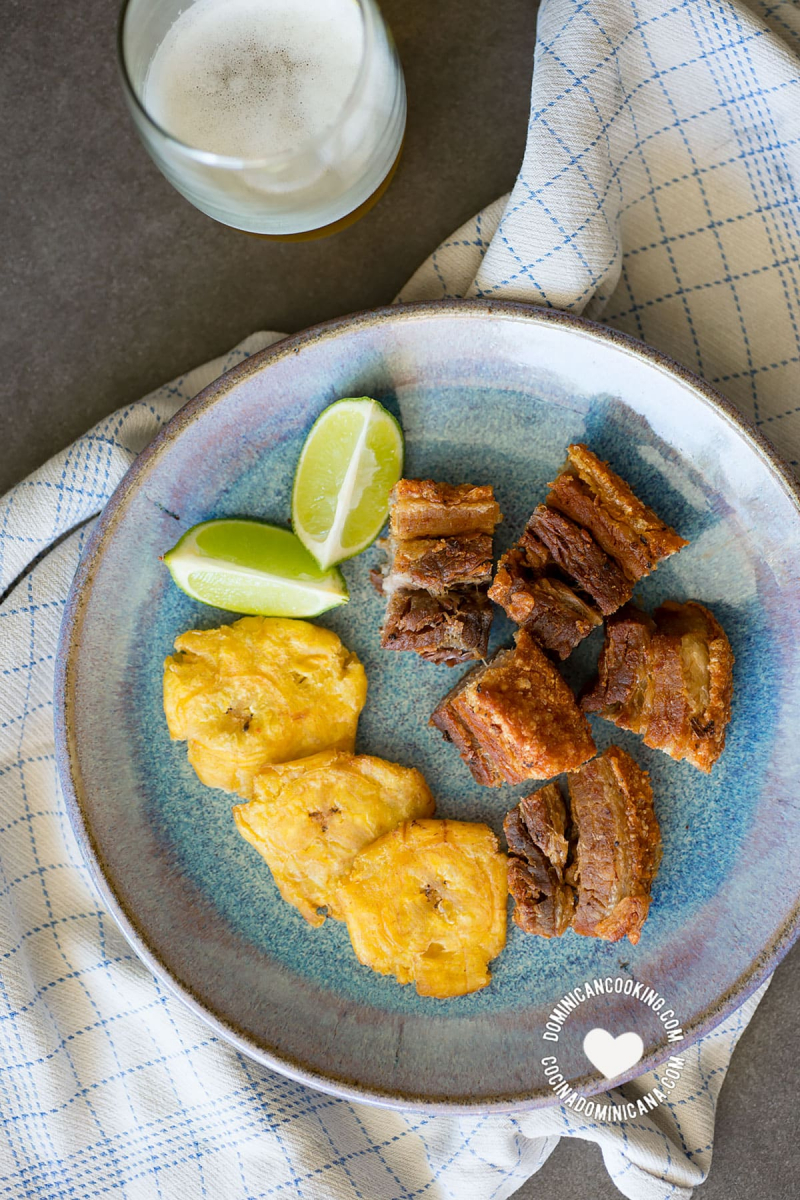
Photo: dominicancooking.com -
Without a doubt, api is my favorite Bolivian beverage. Indeed, if you ask me, Api with Pastel is the best Bolivian dish.
Most of the time, Api Morado (purple Api) is available, which is made of purple corn, cinnamon, cloves, and orange peel.
Because api comes from the Andes, where it gets very cold, the drink is served hot. When you order it, it usually comes with pastel, which is a fried cheese-filled pastry.
Aside from Api Morado, there is also Api Blanco (white api), which is made with white corn. Locals enjoy Api con Pastel for breakfast when it is still cold outside because the drink warms them up. Api is delicious at any time of day. It reminded me of German Glühwein, but without the alcohol, and I couldn't get enough of it.
Api con Pastel can be found near the juice vendors in most markets. You should also keep an eye out at bus stations, where vendors sell it to the unfortunate souls who arrive on one of the overnight buses with no heating. Furthermore, Api is a common Carnival drink, so you'll see it everywhere around that time.
Purple corn, by the way, is a popular base for other South American drinks. Chicha Morada is a must-try in Peru. And you must drink Colada Morada in Ecuador.
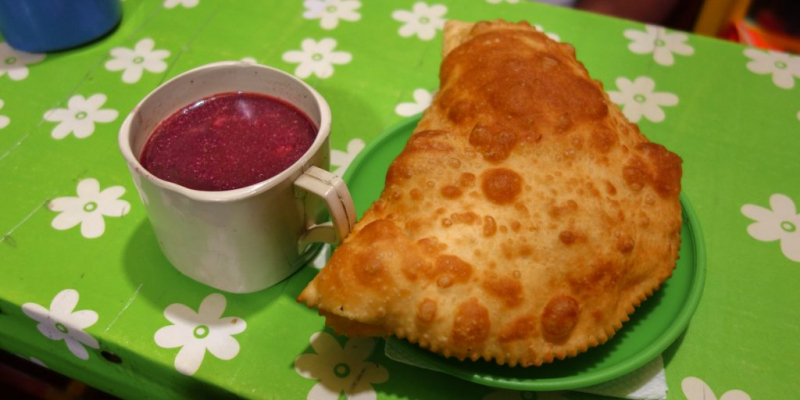
Photo: pinterest 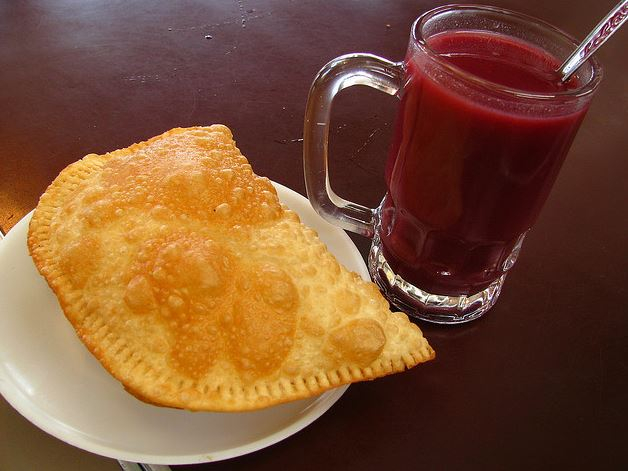
Photo: Spanglish House -
There are numerous fascinating facts about Bolivian cuisine. Did you know that scientists believe the origins of peanuts can be traced back to Bolivia? From there, the nut spread to other parts of South America. Archaeologists discovered 7,600-year-old peanut pods in Peru, and many pre-Colombian cultures depicted peanuts in their art. These nuts eventually became popular all over the world and are now a staple ingredient in a variety of cuisines.
However, given that peanuts originated in Bolivia, it should come as no surprise that one of the country's most traditional dishes is made with them. Try Sopa de Mani, a soup that was probably invented somewhere near Cochabamba.
The soup has a milky appearance and a creamy texture because it is made with potatoes and ground peanuts. In addition to potatoes, it contains beef and vegetables such as carrots and celery. And don't forget about the pasta. The majority of the restaurants we visited served Sopa de Mani with pasta. Some people garnish the soup with a few french fries or fried bread.
When you order Sopa de Mani, you will usually be served with llajua, a red Bolivian sauce that can be used to spice up the dish. Take care. Because the sauce is made of chillies, don't add too many at once.
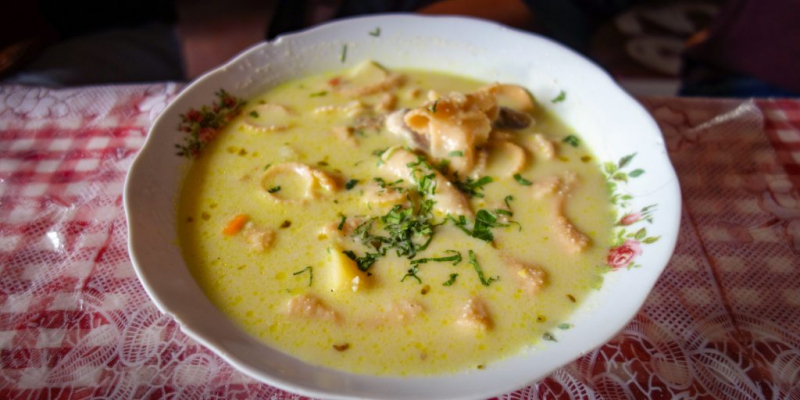
Photo: pinterest 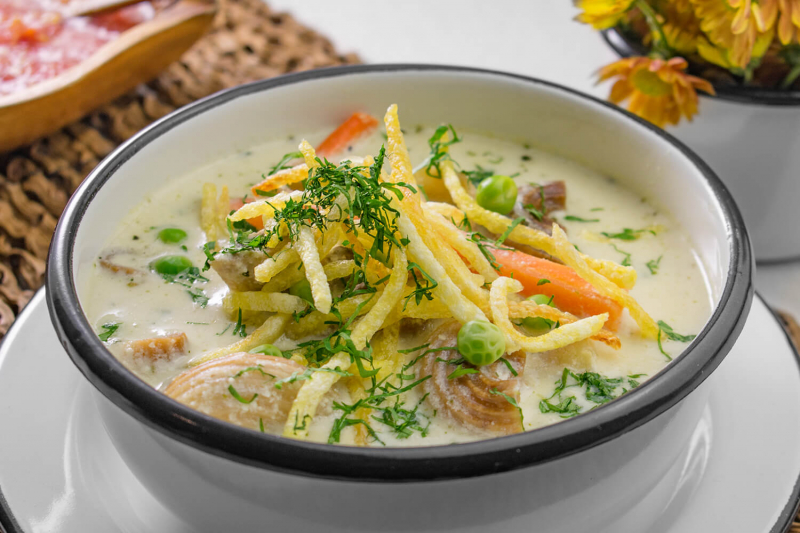
Photo: WPG -
When it comes to soups, Jankaquipa is another Bolivian dish that you should try. It was one of the dishes I tried during my La Paz foodie tour. The soup, which is made with corn, onions, and, of course, potatoes, is a popular starter in the Andes.
Jankaquipa, like Kalapurka, falls under the Lagua category. It took us a while to figure out what that meant, but thanks to Daniel's fluency in Spanish, we can now tell you that Laguas are thick soups. We're not surprised they're popular in Bolivia, given how cold it gets at night in the Andes. You might be fine during the day, but once the sun goes down, you'll be freezing.
In the winter, most locals will eat Jankaquipa. If, on the other hand, you're always cold, you should get some Jankaquipa at any time of year to warm you up!
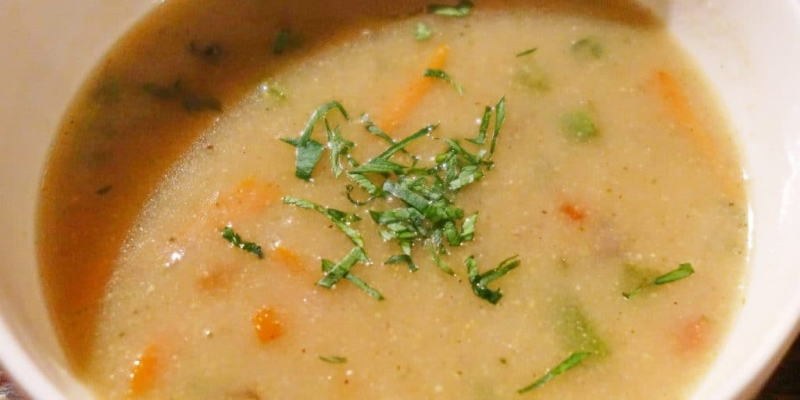
Photo: pinterest 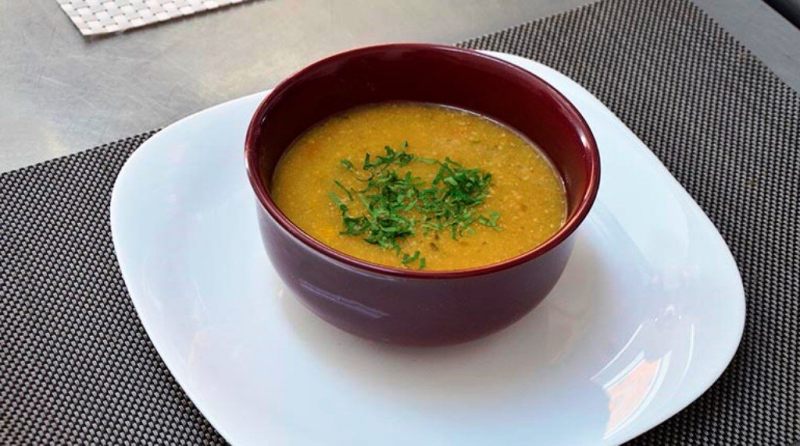
Photo: Recetas de Bolivia -
Mondongo is another pork dish that you should try if you want to try traditional Bolivian dishes.
The meat, which still has a lot of fat on it, is cooked in a sauce that includes onions, chilies, cumin, and a variety of other herbs and spices. Yellow colorant is sometimes added. Mondongo is then served with potatoes and, of course, corn. However, as shown in the image above, it is also available with rice.
While mondongo is traditionally served on All Saints Day, it is available all year in markets across the country.
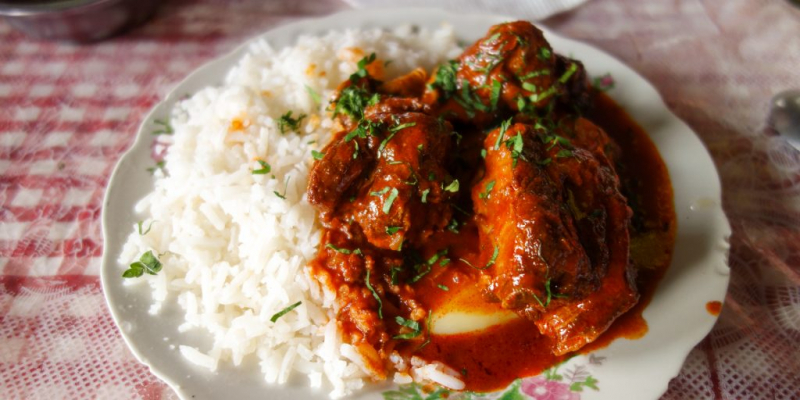
Photo: pinterest 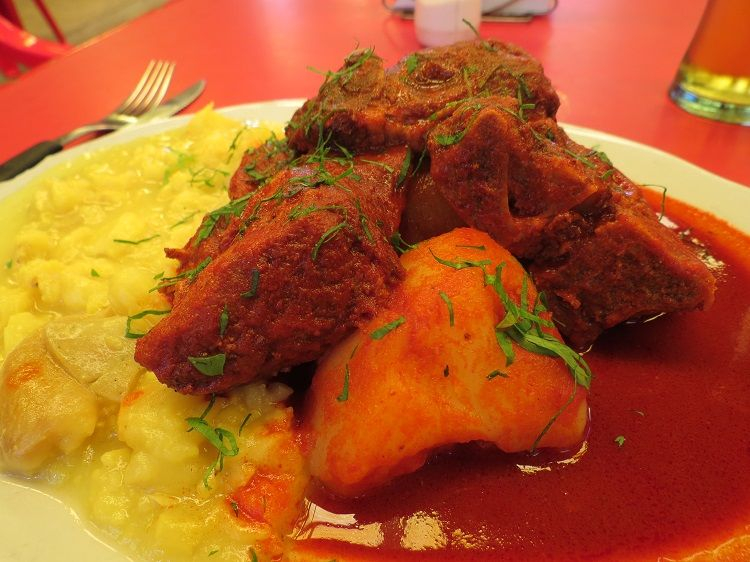
Photo: pinterest -
Bolivia's version of the Pisco Sour is the Singani Sour. And you know what's the best part? Unlike Pisco Sour, whose origins are claimed by both Chile and Peru, Singani Sour has a clear origin. It's from Bolivia.
Lemon juice and, of course, Singani are used to make Singani Sour. Depending on where you get it, you can find a variety of variations of this cocktail with various ingredients (like ginger ale or orange peel).
Singani, the main ingredient in each of these cocktails, is a traditional Bolivian alcohol, a type of brandy made from distilled wine. According to legend, it was created many centuries ago by Spanish monks. When the monks arrived, they planted grape vines in order to make sacramental wine. They quickly realized, however, that it was also possible to distill the grapes and thus created Singani.
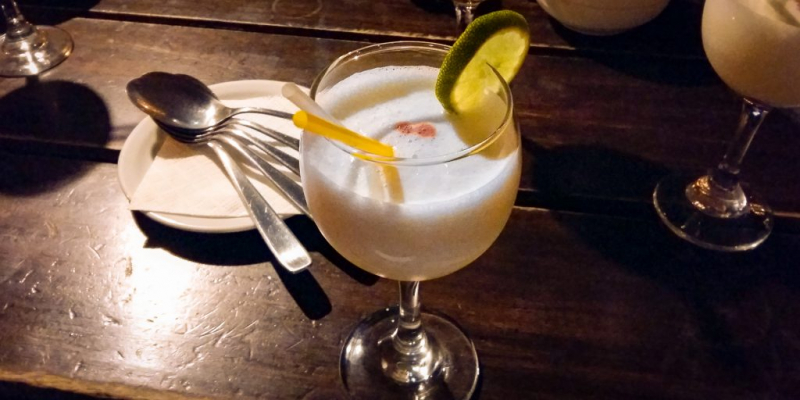
Photo: pinterest 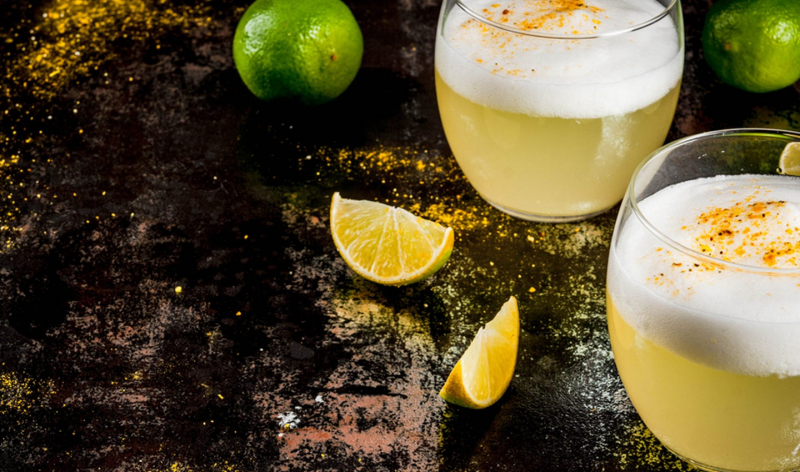
Photo: Singani Rujero -
Kalaphurka (which can be spelled in a variety of ways) is a traditional Potos breakfast dish. It's a soup made with chili, beef or llama, cornstarch, and, of course, potatoes. Before serving, the waiter will place a hot volcanic stone in the bowl, causing the soup to boil for at least fifteen minutes longer.
If you want to try Kalaphurka in Potos, head towards the graveyard from the city center. The majority of restaurants serving this traditional dish are located in the neighborhoods surrounding the cemetery. Why? That is where you'll most likely find K'ala Phurka.
A lot of travelers highly recommended this dish as one of the Bolivian must-try foods.
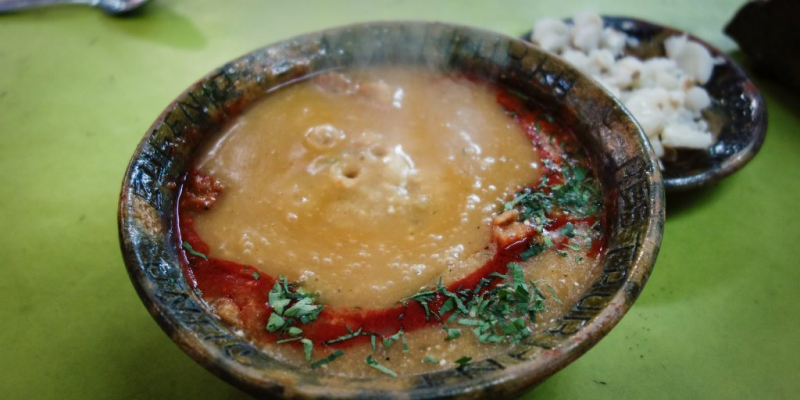
Photo: pinterest 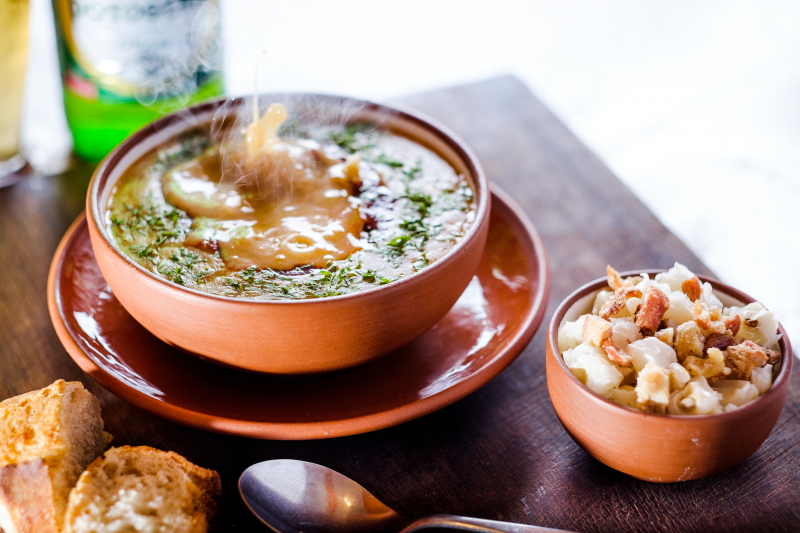
Photo: Wikipedia -
Salteñas is the name of Bolivia's national dish, which consists of crescent-shaped, filled pockets of dough. The name comes from the first known baker of these delicacies, who was born in Salta but later exiled to Potosí.
Salteñas, which are oven-baked and filled with meat (usually chicken or beef), are commonly served for breakfast or as a midday snack. Because of the crushed seeds of the adobo bush, as well as added spices such as cumin and oregano, the sweet pastry and its braided crust have a unique color and flavor that is essential to authentic Bolivian Salteñas, known as achiote spice. They are frequently filled with a spicy and sweetish broth made from yellow peppers, as well as chicken, vegetables, potatoes, olives, and a few hard-boiled eggs.
Salteñas are a little difficult to make because they require special skills, but practice makes perfect, and the sweet smell of freshly baked Salteñas is always worth the effort.
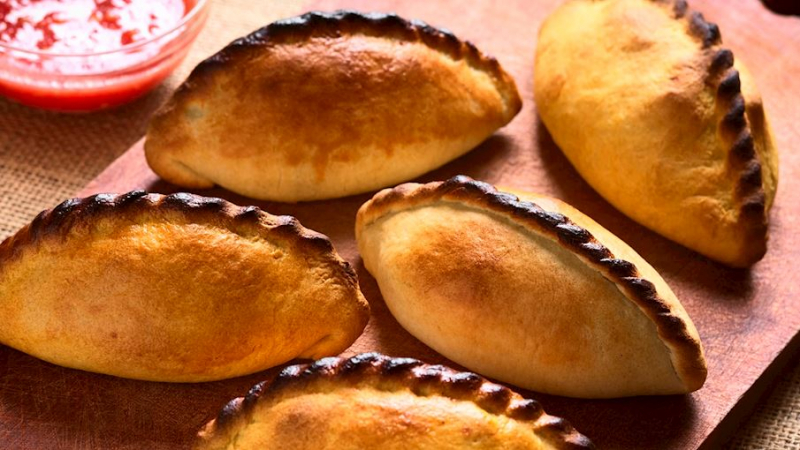
Photo: SHUTTERSTOCK 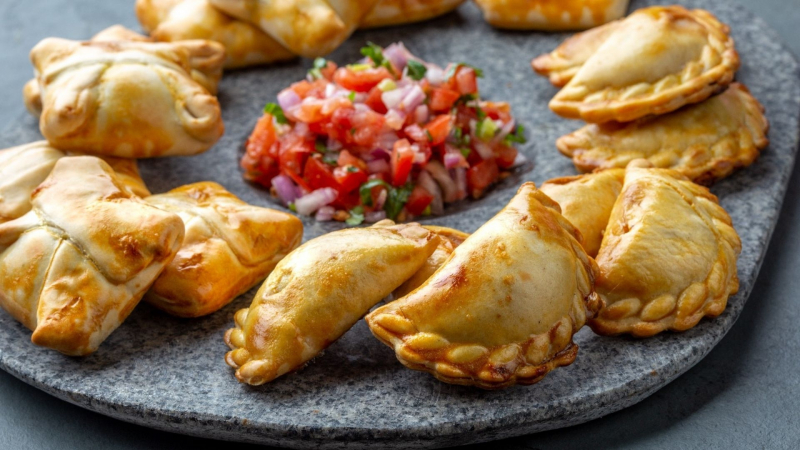
Photo: Beck & Bulow -
Majadito is a dish from eastern Bolivia that consists of rice, dried meat, chopped onions, and tomatoes. The dish's origins can be traced back to the pre-Columbian era in Bolivia, when rice, grains, meat, plantains, and cassava were common food staples among the indigenous people.
It began in the city of Santa Cruz and spread throughout the country. Today, it is considered one of Bolivia's national dishes, and it is commonly served in many Bolivian restaurants. Traditionally, beef jerky was used in the dish, but nowadays dry chicken or duck are also commonly used in majadito preparation.
It is a dish that can be eaten at any time of day, whether for breakfast, lunch, or dinner. Majadito is almost always served with fried plantains and, like many traditional Bolivian dishes, a fried egg on top.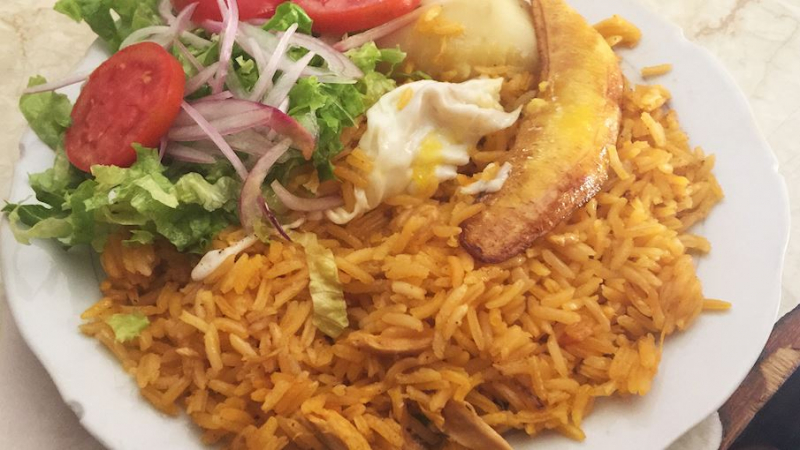
Photo: JAN BECK (CC BY 2.0) 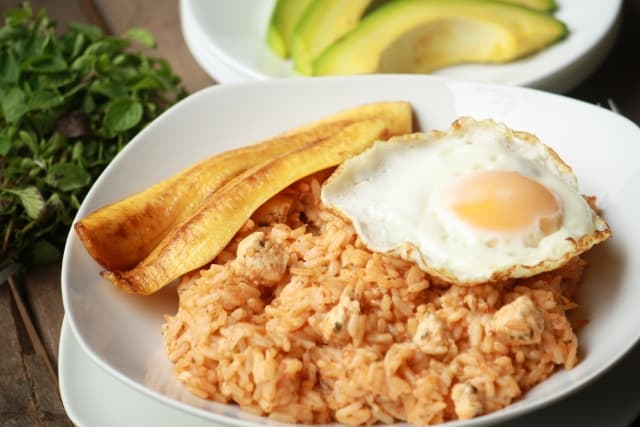
Photo: Chipa by the Dozen -
Anticucho is a meat dish made of small pieces of skewered and grilled meat, the most popular of which are anticuchos de corazón. The dish, which originated in Peru, quickly gained popularity throughout South and Central America.
The first recipe, which refers to a meal of marinated llama meat cooked directly over a fire, dates back to the 16th century. When the conquistadors came across the dish, they adapted it by replacing the llama meat with beef skewered on sugar cane stalks.
Today, the meat is typically marinated in red wine vinegar and spices such as garlic, cumin, and aji pepper before roasting to develop a fruity flavor. Anticucho can be found all over Peru on street carts and food stalls known as anticucheras.
Corn or boiled potatoes are common accompaniments to the dish.
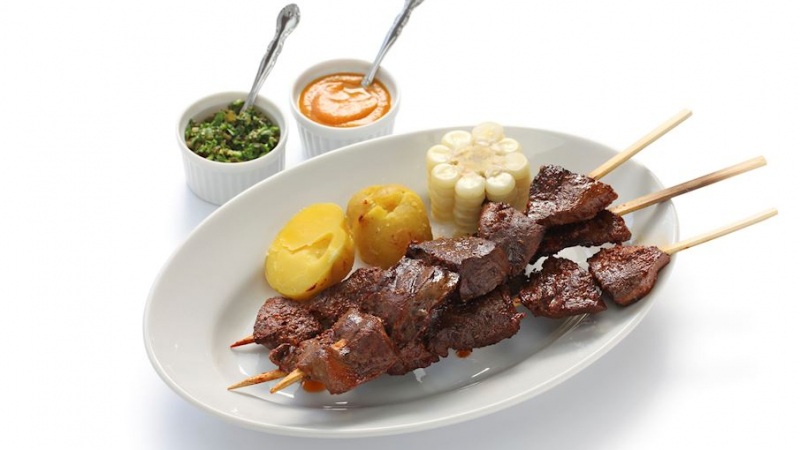
Photo: tasteatlas.com 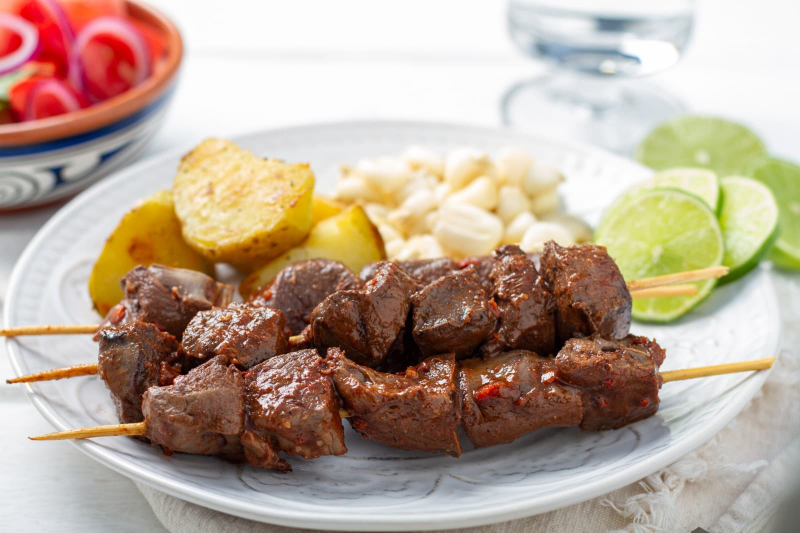
Photo: Eat Peru















